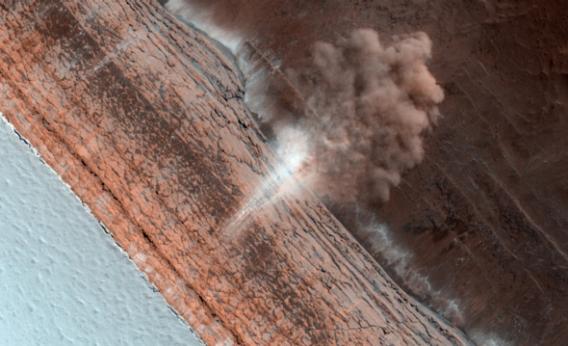Create a free profile to get unlimited access to exclusive videos, sweepstakes, and more!
Flying Over Mars

In 2003, on Christmas Day â Dec. 25 â the Mars Express space probe slid into orbit around the red planet. Since that time, it has returned vast amounts of data about Mars: It has mapped the surface, taken altimetry data, looked at the mineral composition of the surface, investigated the atmosphere, and even looked into how the planet interacts with the solar wind
To celebrate a decade of success of this ambitious spacecraft, the European Space Agency has released a pretty cool video created from Mars Express images and topographical data⦠allowing you, the viewer to see what itâs like to fly over Mars!
OOoooo, pretty. I saw quite a few landmarks in there, including Olympus Mons, the tallest volcano in the solar system; Valles Marineris, the longest rift valley in the solar system (itâs wider than the Grand Canyon is long!); an elongated crater Iâve written about before (at the 2:20 mark, and shown at the top of this article); and the ridiculously gorgeous and very weird swirls in the terrain at the Martian north pole (though the south pole of the planet is even more jaw-droppingly beautiful).Â
I was also intrigued by a crater shown at the 1:50 mark, which looks like it got filled by a landslide off a nearby hill. Mars isnât what you might call geologically active, but it does commonly suffer landslides and avalanches when the frozen carbon dioxide ice under the surface sublimates (turns directly from a solid into a gas), which can dislodge material. If that happens at the top of a hill or cliff, material can cascade down dramatically. I strongly suspect thatâs what weâre seeing in this video.
Mars has little air, is very cold, and is extremely dry. But its beauty is undeniable, and this video makes me wish I could hop the nearest interplanetary cruiser and take a tour of this small but incredibly fascinating world. Maybe, just maybe, someday people really will be able to do that. If and when that happens, itâll be in part due to the work by probes like Mars Express.














